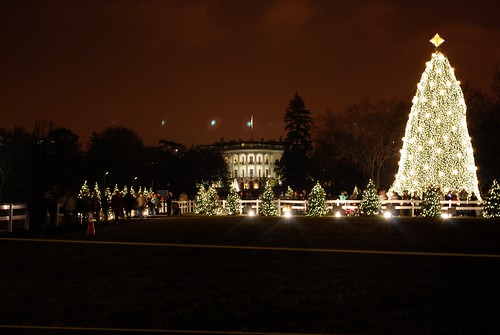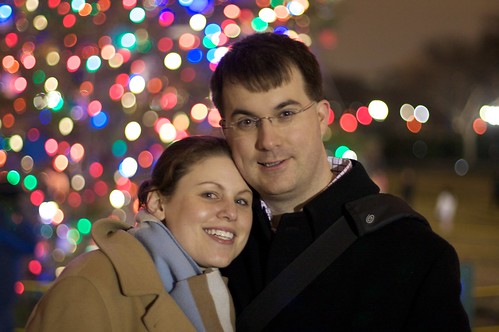Virginia House Approves Ban on Smoking
RICHMOND, Feb. 9 -- The Virginia House of Delegates approved a plan for a ban on smoking covering most of the state's restaurants and many of its bars Monday, marking a significant political and cultural shift for a state whose history has been intertwined with tobacco for centuries.
Virginia has repeatedly resisted efforts to curtail smoking in public places, even as health concerns over secondhand smoke prompted 23 other states and the District to start enacting prohibitions.
The vote Monday makes it likely that a ban in some form will become law. The Republican-controlled House has been a choke point for years because of the strong influence of rural lawmakers who consider tobacco a critical ingredient in the state's economy, and because of their resistance to imposing limits on personal freedom. In Virginia, where one in every five adults is a smoker, government restrictions on smoking in private establishments have been limited to day-care centers, certain large retail stores, doctors' offices and hospitals.
Currently, individual bars and restaurants impose their own smoking rules. This bill for the first time puts the government into that mix and covers almost all dining rooms and bars in the commonwealth.
The outcome is, in part, a product of a dramatic shift in Virginia's demographic and political landscape, where the influence of Northern Virginia and Hampton Roads has overtaken once-powerful rural interests.
Monday's action did not come easily; the House weakened the original proposal during its debate. Neither the anti-smoking movement nor the tobacco industry was thrilled with the compromise plan brokered by Gov. Timothy M. Kaine (D) and House Speaker William J. Howell (R-Stafford). Their proposal permitted smoking in private clubs and in establishments that constructed separately ventilated enclosed smoking rooms for patrons.
Amendments would permit smoking in rooms separated by doors, even if there is no separate ventilation system. They carved out exceptions for smoking in outdoor patio areas; at restaurants during private functions when the function takes up the entire restaurant; and at clubs or bars at times when under-age patrons are not admitted.
Even though some anti-smoking groups considered the amendments painful, supporters of the measure still hailed the vote as a crucial step toward negotiating an acceptable compromise in the coming weeks.
"The amendments gutted the bill, but the bill is still alive, and because of the way the legislative process works, there is still an opportunity for compromise," said Del. David L. Englin (D-Alexandria), who introduced the governor's original smoking ban bill this year.
"It's a big deal," agreed House Minority Leader Ward L. Armstrong (D-Henry). "You got all these guys from tobacco country . . . voting for a smoking ban. Okay, so it's not 100 percent. . . . Does that matter? It's about 90 percent there."
Monday's vote came after a contentious debate on the House floor in which many delegates from rural, tobacco-growing areas in the southern parts of the state joined with the most conservative members to try to gut the bill. Many objected to what they said was an assault on individual freedom.
"We're supposed to be the party of more freedom, not less freedom," said Del. Jeffrey M. Frederick (R-Prince William). "As much as I personally would love a smoking ban, it's not my job to tell small-business owners what they can and cannot allow in their small businesses."
The American Heart Association, American Cancer Society and American Lung Association had their own complaints -- that the proposal does not clearly specify what constitutes a separate room and that it lacks strong enforcement. Violating the ban would bring only a $25 fine for businesses.
"From listening to today's debate of the proposed smoke-free legislation, it appears that the House of Delegates voted to make an already bad bill even worse," said Pete Fisher, vice president of the Campaign for Tobacco-Free Kids.
The Democrat-controlled Senate is expected to pass the bill, though it probably will try to restore the language from the version offered by Kaine and Howell.
If approved, Virginia would be the first state in the South to ban smoking in both restaurants and bars.
Tobacco was once the foundation of Virginia's economy. The state is still home to thousands of tobacco farms and Philip Morris, the world's largest cigarette manufacturer.
Public sentiment in recent years has shifted rapidly in favor of the bans, in Virginia and across the nation. A 2006 Gallup poll found that even most smokers believed restrictions in public places were justified.
Kaine and Howell spent weeks behind closed doors negotiating the unexpected compromise. If successful, the landmark deal would offer Kaine a legacy-setting legislative accomplishment before he leaves office and would provide Howell with one less potential vulnerability leading to the House's crucial elections in November.
Mark Rozell, a professor of public policy at George Mason University, attributes the change among Republicans to the state's recent political and demographic shifts.
"Many Republicans think it's too risky for them not to vote for it," Rozell said. "They don't want to be seen as the dinosaurs of Virginia politics anymore."
The House voted on two identical versions of the legislation. Both bills were approved, with half the Republicans joining most Democrats. One of the bills faces a final vote Tuesday.

 I'm stumped. I've been using Aperature for just over a year now, ever since I got my Canon 40D in December of 07 and decided to make the switch to shooting completely in RAW. I have a photo library of approximately 16,000 pictures. Due to the great new features in iPhoto 09 such as Faces, Places and the older (but awesome) feature known as Events, I wish to switch back. The problem is, I search on Google, I search on the Aperture and iPhoto support discussion boards at Apple.com, I search everywhere I can think of, and I cannot find anyone with a solution (only lots of other people with the same problem). Apparently there is no native, built-in, way to switch from Aperture BACK to iPhoto (only iPhoto to Aperture).
I'm stumped. I've been using Aperature for just over a year now, ever since I got my Canon 40D in December of 07 and decided to make the switch to shooting completely in RAW. I have a photo library of approximately 16,000 pictures. Due to the great new features in iPhoto 09 such as Faces, Places and the older (but awesome) feature known as Events, I wish to switch back. The problem is, I search on Google, I search on the Aperture and iPhoto support discussion boards at Apple.com, I search everywhere I can think of, and I cannot find anyone with a solution (only lots of other people with the same problem). Apparently there is no native, built-in, way to switch from Aperture BACK to iPhoto (only iPhoto to Aperture).

